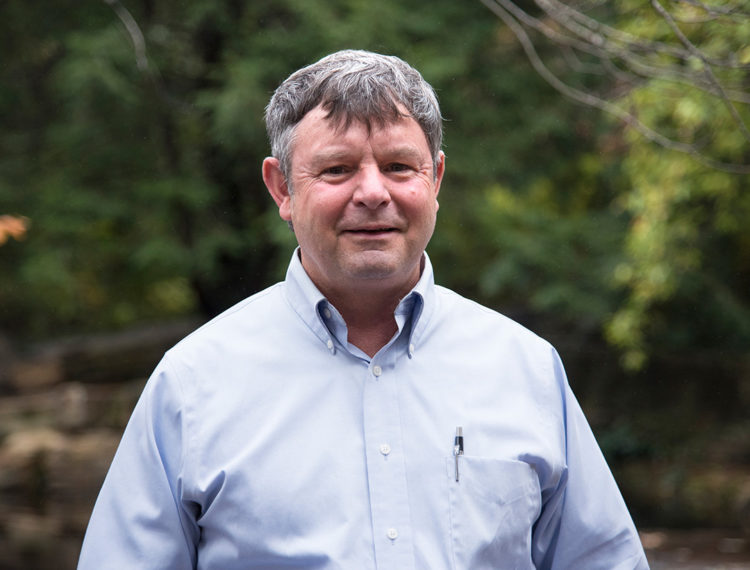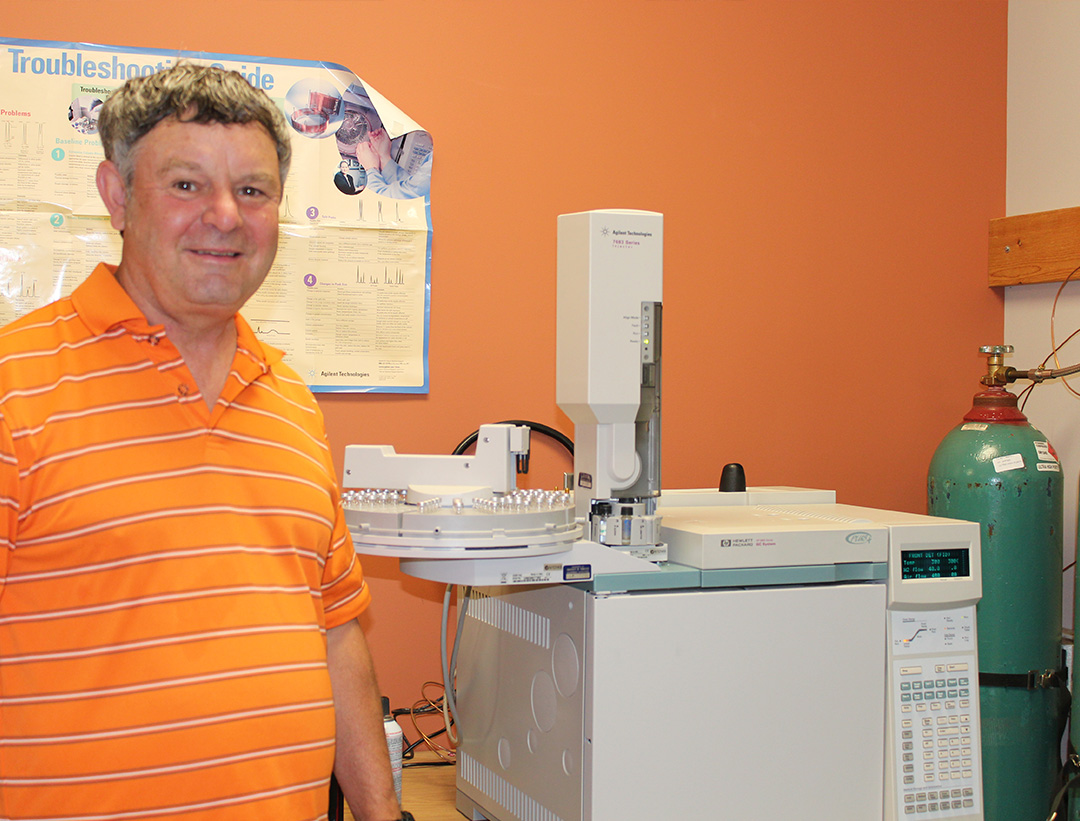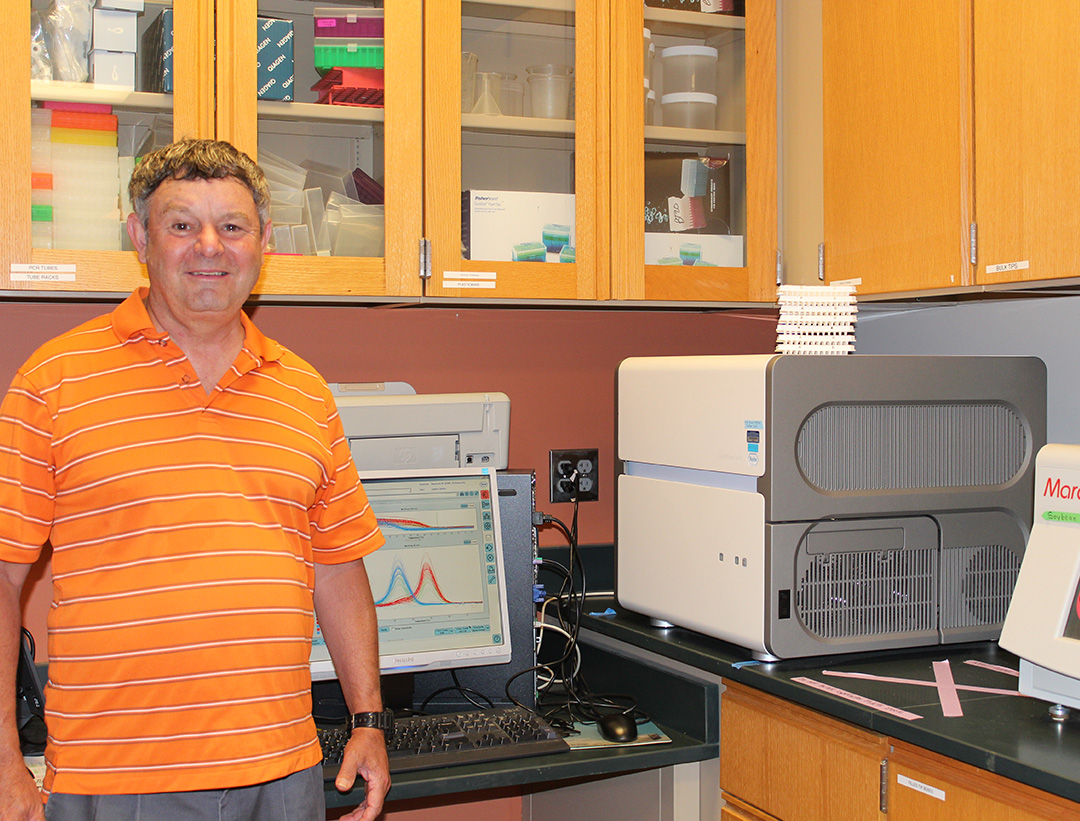 Increased yields – improving and innovating soybean varieties.
Increased yields – improving and innovating soybean varieties.
Soybean oil is one of the most commonly produced and consumed oils in the U.S. Some industries work with crude soybean oil, but partially hydrogenated soybean oil has a long history of use in the food industry. In 2015, the Food and Drug Administration released its final determination that partially hydrogenated oils (PHOs) are not “generally recognized as safe” for human consumption, presenting a new set of challenges for soybean oil manufacturers.
One UT Institute of Agriculture researcher seeks to protect traditional uses of soybean oil by developing varieties stable enough for use in manufacturing and industrial processes without undergoing hydrogenation. Vince Pantalone is a professor in the Department of Plant Sciences and project leader for the Soybean Breeding and Genetics Program. His research centers on targeting genetically improved germplasm and new cultivars with enhanced productivity, disease resistance, herbicide tolerance, and tolerance to biotic and abiotic stresses.

In a recent study, Vince and his research associates determined that two naturally occurring mutations in genes FAD2-1A and FAD2-1B can combine to produce high-oleic soybeans. Soybean oil with high oleic acid has increased oxidative stability and health benefits that are valuable for food, fuel, and a variety of industrial products. In January 2020, the group published their findings in the Journal of the American Oil Chemists’ Society. The work, entitled “Field Performance of High Oleic Soybeans with Mutant FAD2-1A and FAD2-1B Genes in Tennessee,” was named article of the month.
As a part of the Soybean Breeding and Genetics Program, Vince and his team develop new soybean varieties with increased disease resistance and higher, better-quality yields for farmers. He notes, “In the past three years, production of our new varieties has given farmers the opportunity to receive $37 million in revenue.”
The team conducts multi-field location trials at four research and education centers across the state: East Tennessee AgResearch and Education Center; Highland Rim Research and Education Center; AgResearch and Education Center at Milan; and West Tennessee AgResearch and Education Center.

Every year, Vince and his team plant yield plots from May until mid-June and finish planting plant population rows and single plants by the end of June. They harvest seeds in late September through November. Due to the pandemic, Vince described this particular planting season as very challenging.
“At one point, none of my students were working because they were all home, and we only had two other research associates trying to hold down the fort,” he said. “It’s been very challenging the past couple of months to get enough work done so that we were on target for what we need, but we did it.”
In his spare time, Vince enjoys outdoors activities such as kayaking, fishing, or tending his garden. At work, he loves making visual plant selections in the fall and working with his graduate students. Speaking about one of his graduate students and research associates, Mia Cunicelli, who earned the 2020 Archer Daniels Midland Award for Best Paper in Chemistry and Nutrition, he remarked, “It’s very gratifying to see my graduate students do well and advance professionally.”

Since arriving at the university in 1998, Vince has filed 14 invention disclosures with UTRF. He holds two utility patents, including one with his colleague Tarek Hewezi, a professor in the Department of Plant Sciences, for their collaboration on soybean cyst nematode-resistant soybean lines.
“Vince is a dedicated researcher who continues to make numerous contributions to the field of soybean breeding,” UTRF Vice President Maha Krishnamurthy said. “UTRF is proud to partner with innovators like Vince, who are passionate about using their research to meet industry challenges and make a lasting impact to our food supply-chain.”